| The Hemispherical Bowl Instruments at the Jaipur Observatory | |
| Introduction | |
| Kapali Yantra - The two small hemispherical bowls | |
|
Construction:This instrument consists of two hemispherical marble hemispherical bowls ??? feet in diameter. Each bowl has the same line markings, and can be thought of as the inverse of the celestial hemisphere. Lines are marked on the marble to show the altitude and azimuth, the declination and hour angle, and the signs of the zodiac The western Kapali has a metal square with a small circular hole suspended by cross-wires on the meridian and at right angles to it. In this instrument, the zodiacal lines are lettered with their names. The eastern instrument has no cross-wires and no lettering; Use: The western Kapali can be used for determining altitude, azimuth, meridian transit, declination and hour angle. The eastern Kapali is said to have been used solely for graphical calculations. |
|
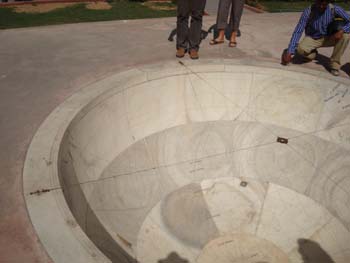 |
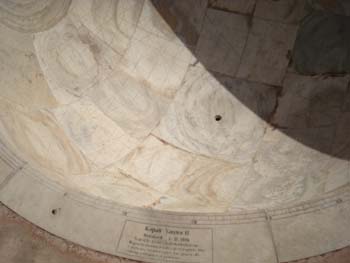 |
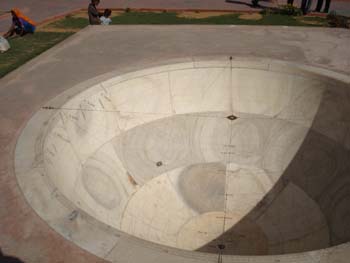 |
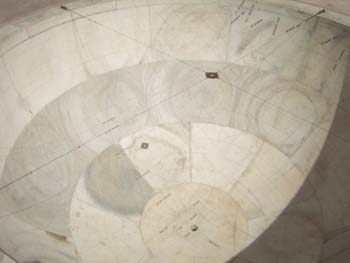 |
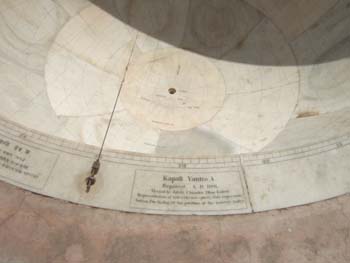 |
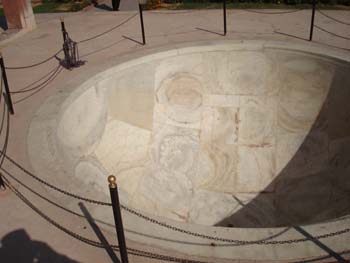 |
| Jai Prakesh Yantra - The two large hemispherical bowls | |
| Construction: This instrument consists of two hemispherical marble bowls of 17.5 feet diameter representing the celestial hemisphere inverted, and a ring suspended on cross wires at the centre of the hemisphere representing the sun. However, each bowl has only half of the surface area of the hemisphere, represented by six marble slabs with gaps between them to enable the observer to inspect the surface of the slabs. The second bowl has marble slabs in place of the gaps in the first one, and gaps instead of the marble slabs of the first one, so that together the two bowls present the entire surface of the hemisphere. The marble slabs are marked with both altitude and azimuth scales, and thus show the meridian and the equatorial plane. The rim is marked out from 0 to 90° in each segment. Use: The instrument was invented by Maharajah Jai Singh, and its extraordinary accuracy enabled it to be used to fine-tune some of the other instruments. The Jai Prakesh Yantra is a very significant improvement in design over the Kapali, and demonstrates the intellectual qualities of Jai Singh and his collaborators, and the great advantage to such rare people of having almost limitless resources to carry out their ideas in practice. This design enables the observer to put his eye in the plane of the hemisphere, and also, very significantly, to make precise observations at n |
|
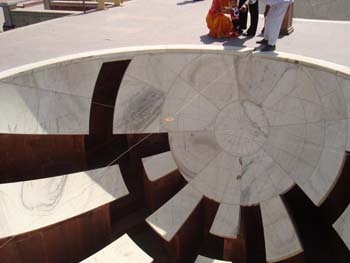 |
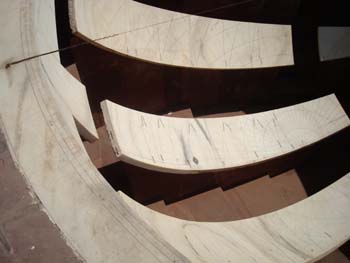 |
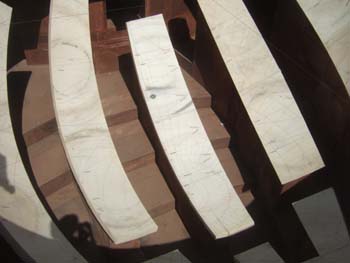 |
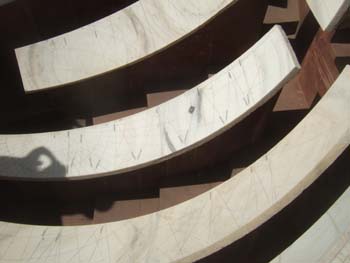 |
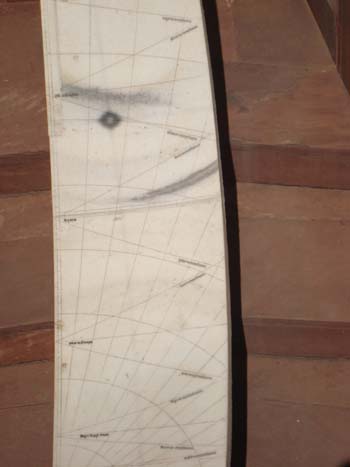 |
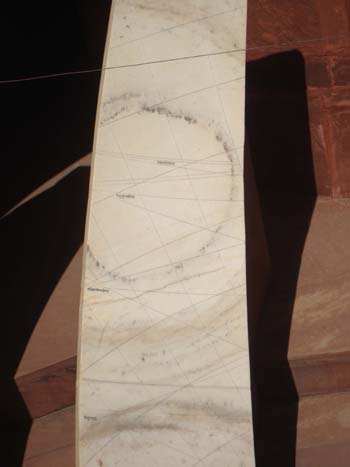 |
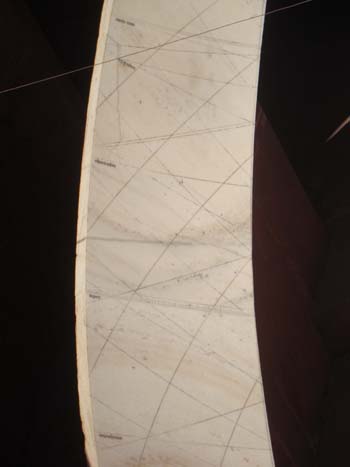 |
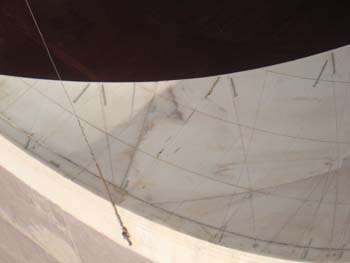 |
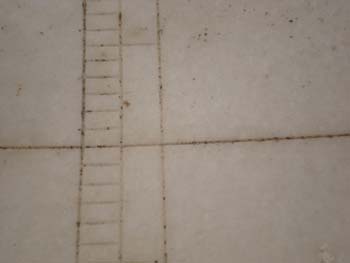 |
 |
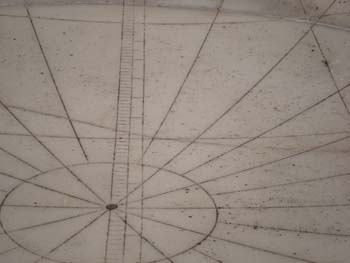 |
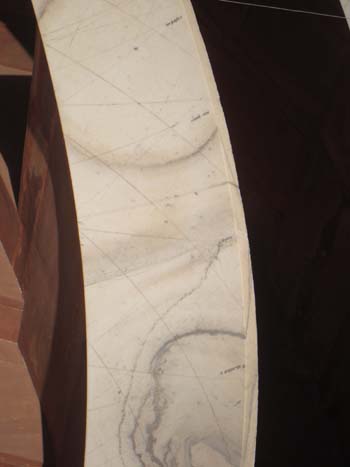 |
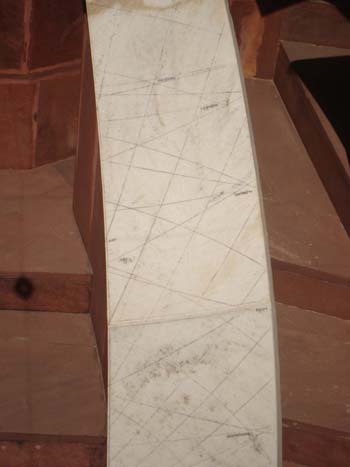 |
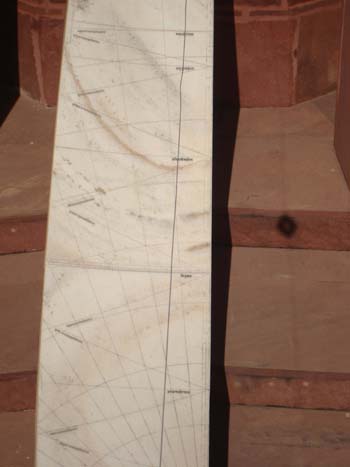 |
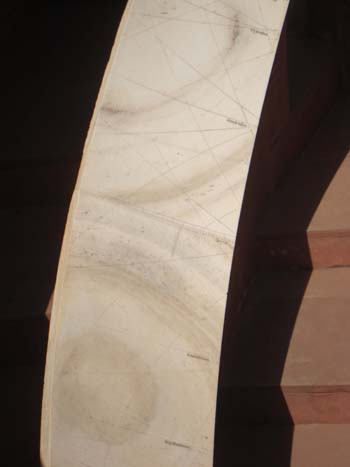 |
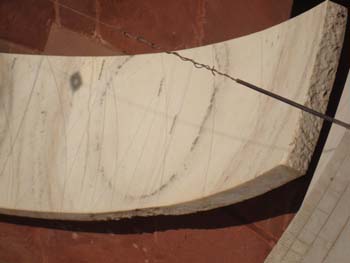 |
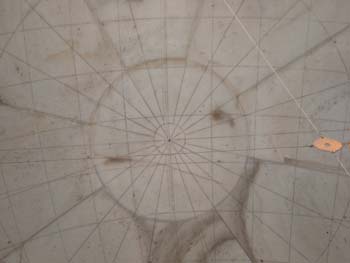 |
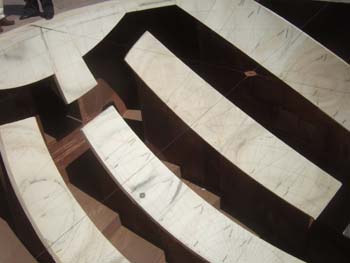 |
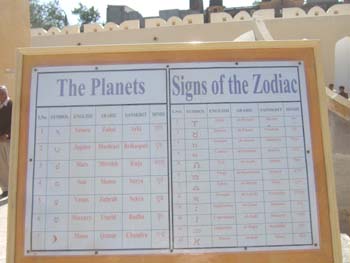 |
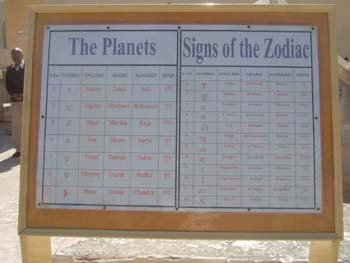 |
| This page written and maintained by Internetworks Ltd |
|